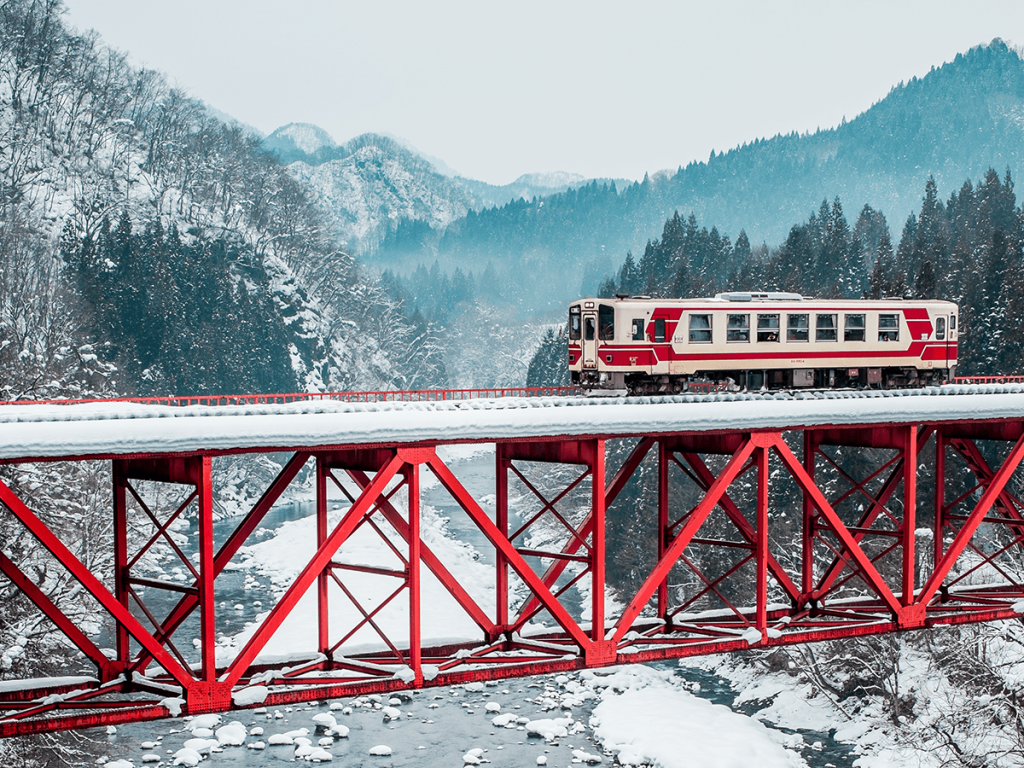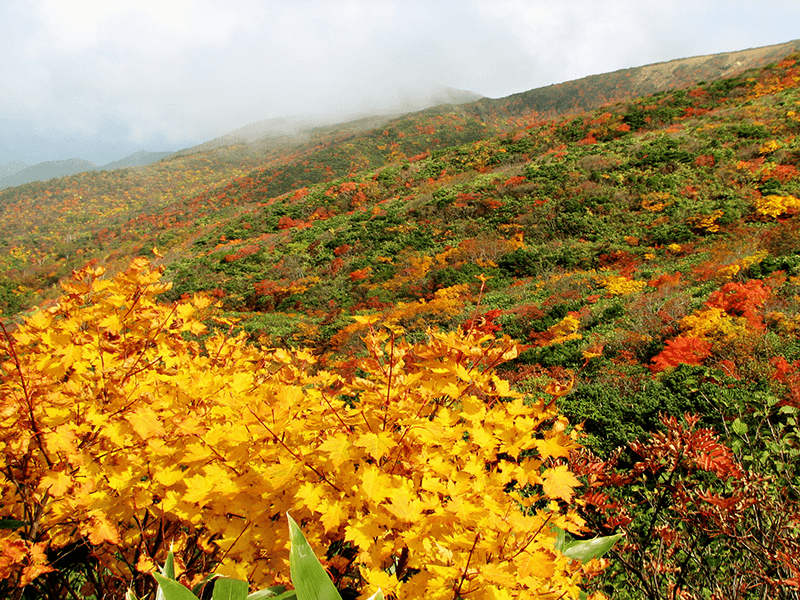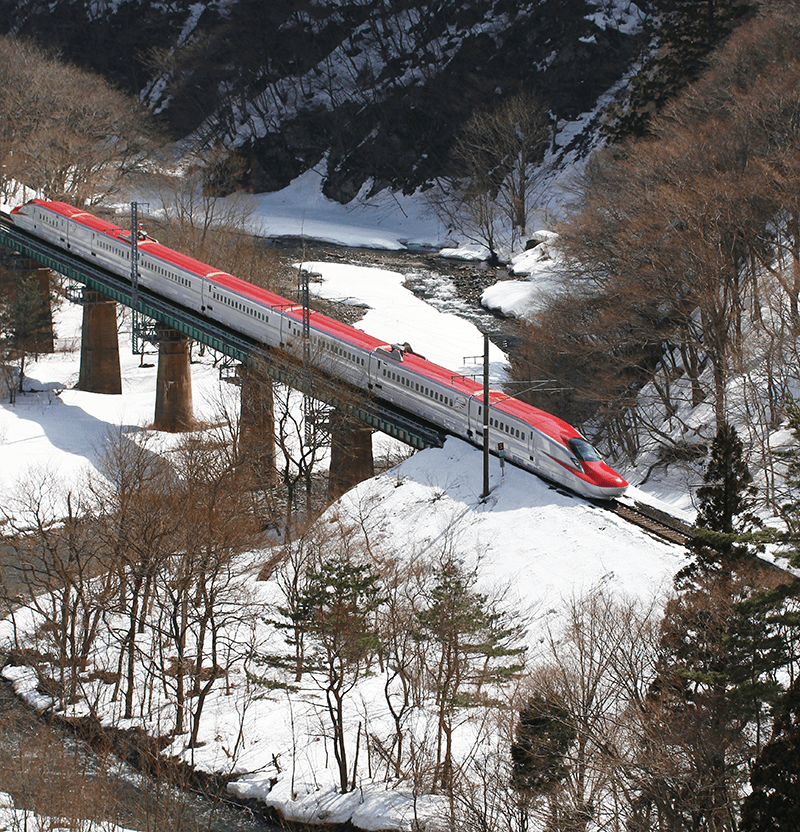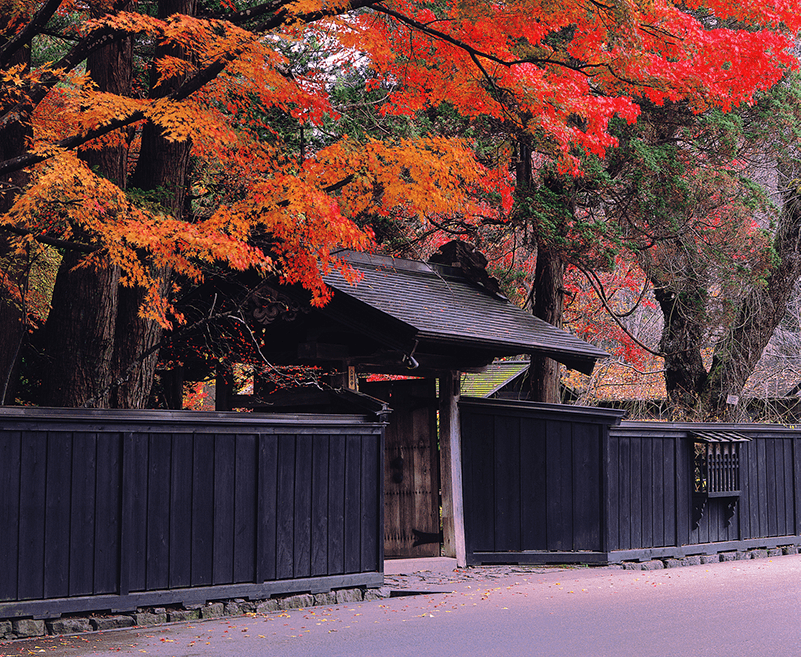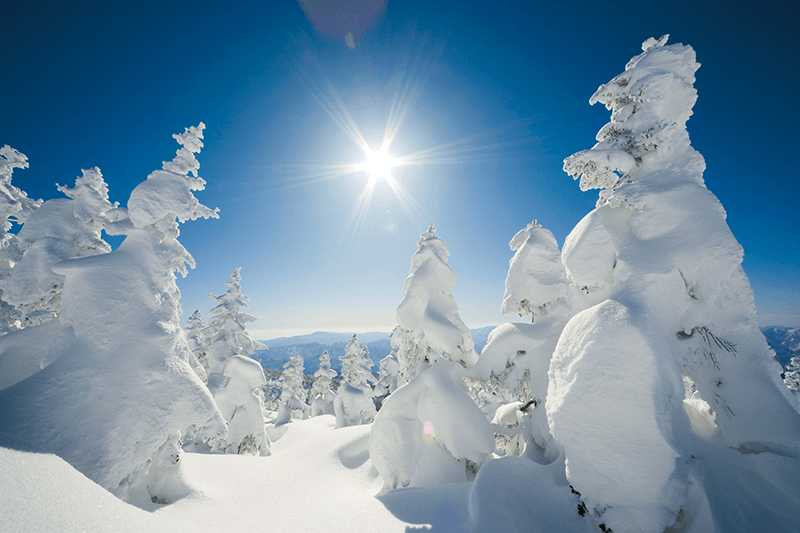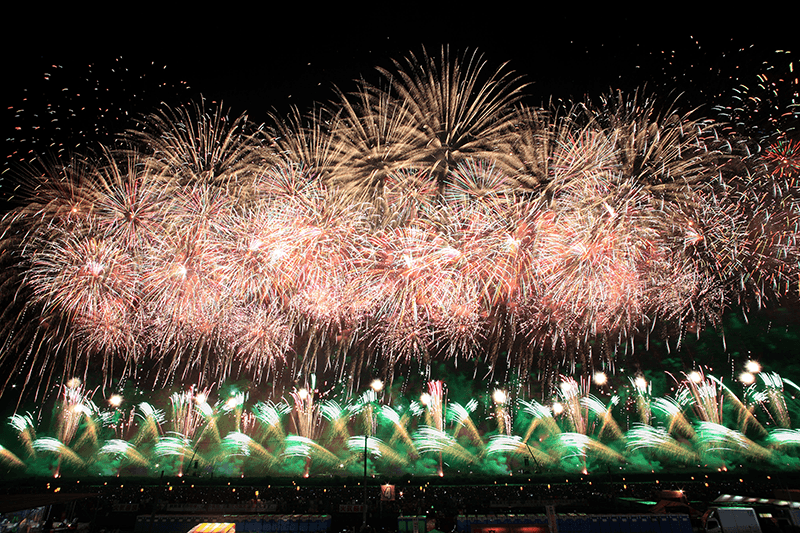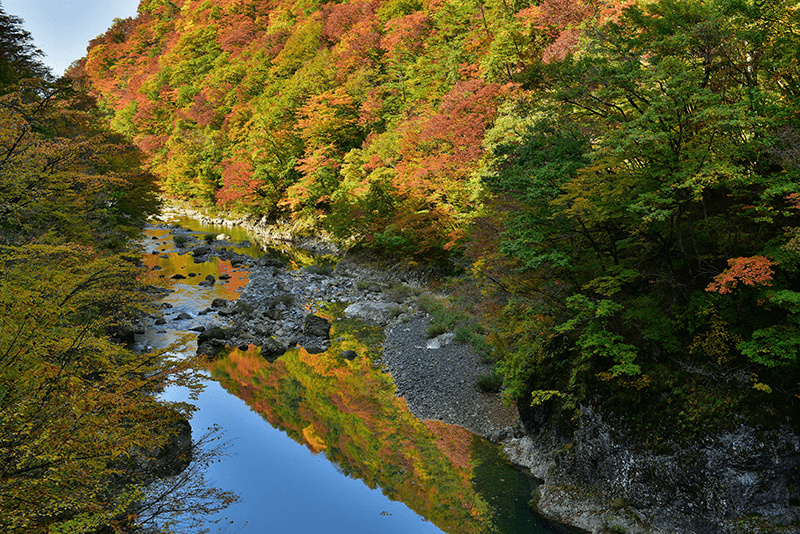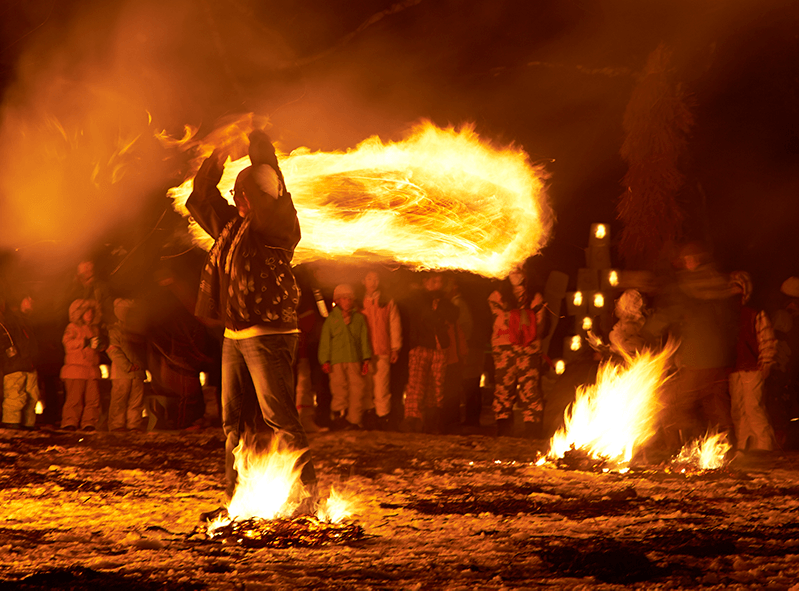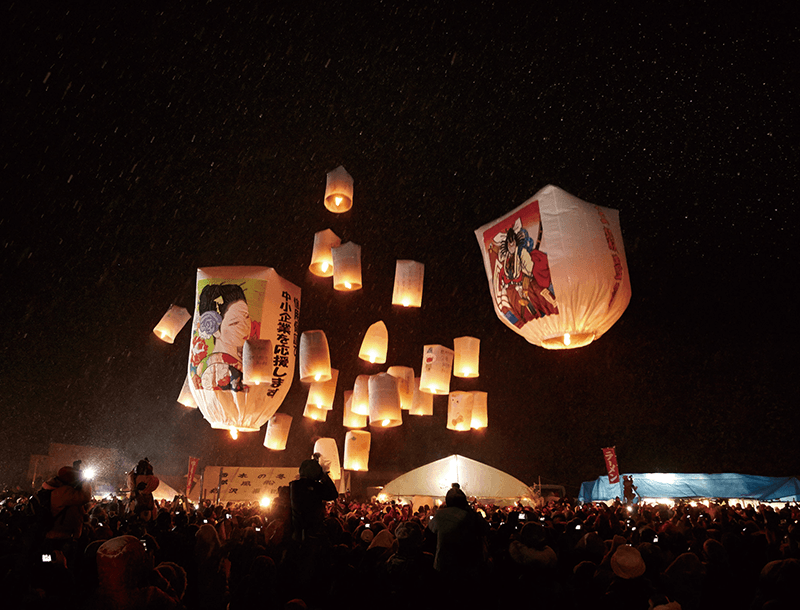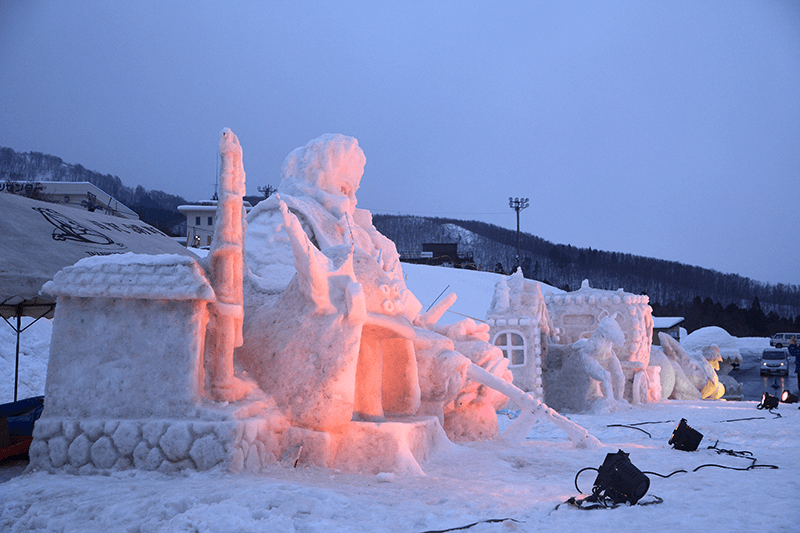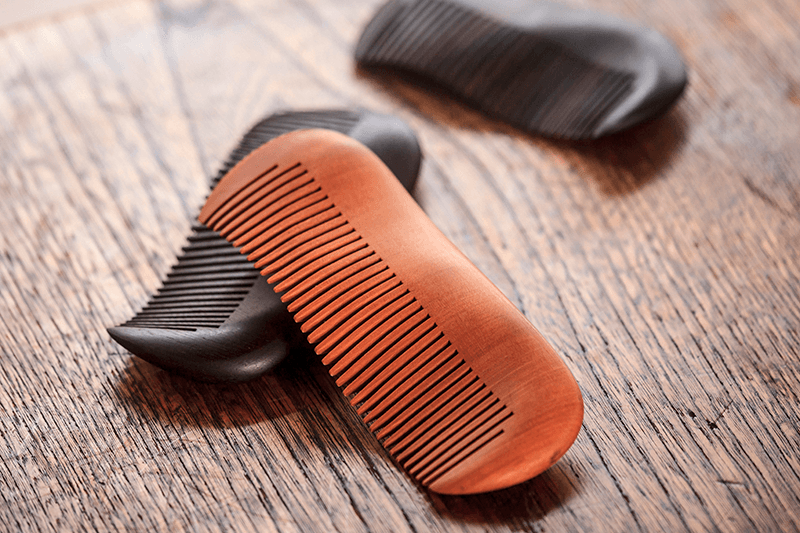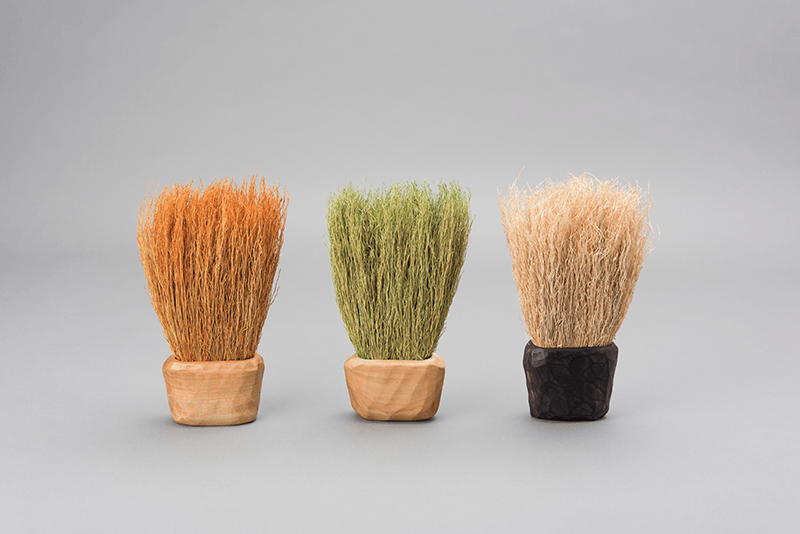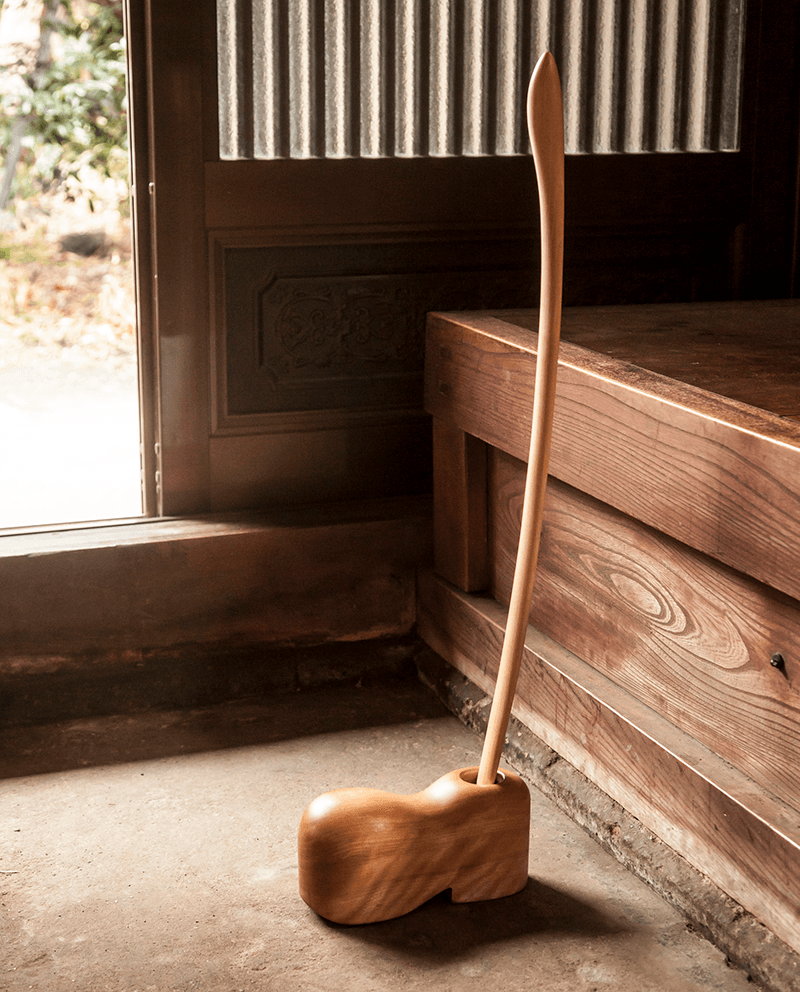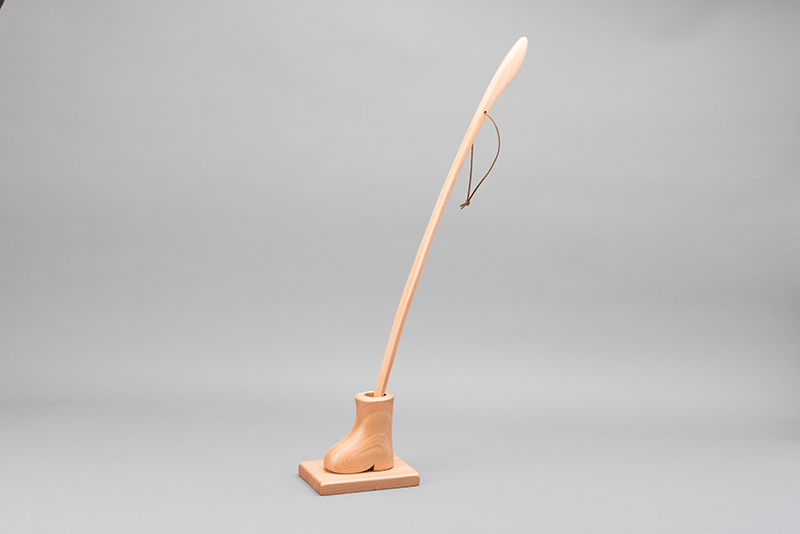Found in the northern part of Tohoku, just next to the Sea of Japan, Akita Prefecture is perhaps best known for its abundance of natural beauty (and also for its beautiful breed of dog). But there’s far more to the region than its mountains, forests, hot springs, ocean, and fluffy inu – Akita also has a long heritage of craftsmanship extending across a variety of genres including textiles, woodwork, and ceramics; it also produces superb sake and local cuisine. So what better way to explore the best of Akita than through the five senses?
In this five-part series, we take you on a journey through the region using sight, sound, smell, touch, and taste to provide top tips on things to experience while you’re there. If you’re looking for even more things to do and see, visit the prefecture’s official website at www.akitafan.com/en
First up, exploring the region through your sense of sight…
Words by Alec Jordan and Matt Schley
Feast Your Eyes on Fall Foliage
To get a peek at Akita’s majestic autumn leaves, make your way north to the Shirakami Sanchi mountain range, a UNESCO World Heritage Site that’s home to waterfalls, canyons and a rare virgin beech forest. Further south, near the hot spring resort of Yuze Onsen, you’ll find a 4.6km-long trail through Yuze Gorge, which features sharp cliffs eroded into strange shapes. Combined with the breathtaking beauty of colorful fall foliage on both sides of the river, it’s a stunning display. Catch the best view from Tengu Bridge. Finally, travel east to visit Hottai Falls, a waterfall with a 60-meter drop that’s been officially designated one of Japan’s 100 best.
Take in the Sights on the Slow Train
One of the best ways to get a look at Akita’s sprawling sights is through the windows of a sightseeing train. The Resort Shirakami, which operates between Aomori and Akita, runs along the coastline and delivers breathtaking views of landmarks like Shirakami Sanchi. If that isn’t enough, there’s also an onboard bar, art gallery and even live performances. If you’re traveling in winter, don’t miss the Akita Nairiku Line, which lets you leisurely take in the snowscapes while passing through 20 tunnels and – count ’em – 322 bridges. Finally, don’t miss the adorable 23-kilometer Chokai Sanroku Line, the one and only train operated by Yuri Kogen Railway.
Paint in Black in Kakunodate
That’s the Akita city best known for its rows of bukeyashiki, former samurai residences, built with deep-black wood. The layout of the city, known as Akita’s “little Kyoto,” has remained virtually unaltered since its founding in the 1600s. Some of its beautifully preserved houses serve as walk-in museums, while others have been converted into cafés, restaurants, and souvenir shops. The city is equally beautiful in spring, when its 400-plus weeping cherry trees bloom, and in autumn, when it shines in elegant yellows and reds. For the true old-school Kakunodate experience, we recommend a rickshaw tour.
Make a Date with Snow Monsters
Covered in wildflowers in summer and brilliant leaves in fall, Mt. Moriyoshi is worth a visit any time of year – but in winter, here there be giants. These towering ice giants, actually snow-covered trees, are called juhyo (“snow monsters”) and are said to be the ancient guardians of the mountain. The juhyo can be reached via gondola, which also brings you to Ani Ski Resort, which features several courses of varying difficulty.
Experience Rice as an Art Form
“Shouldn’t rice be in the ‘taste’ section?” you ask, and while Akita does grow some of the nation’s finest grains, it does so in a way that’s as fun to look at as it is to eat. We’re talking about the Akita Rice Field Art Experience, in which different colored rice seedlings are planted in patterns to create stunning works of art right there in the fields. You can even take a train from Takanosu and Kakunodate and watch these edible works of art roll by in style.
See the Night Sky Come to Life
Japan is known for its high-quality fireworks displays, and Omagari in Daisen city regularly assembles the best of the best for some seriously explosive evenings. Omagari hosts multiple fireworks festivals throughout the year – the summer version, which has been held since 1910, is a national competition in which the best pyrotechnicians in Japan show off their stuff to hundreds of thousands of spectators (if you can’t make it in the summer, not to fear: the spring and fall versions are pretty darn impressive, too).
Embrace the Changing Seasons in Dakigaeri
Located in the eastern part of Semboku City, the Dakigaeri Valley is known for its spectacular views – and its interesting name. According to old stories, the mountain road that people used to travel on through the area was so narrow that those who were going in opposite directions and needed to pass each other had to embrace (daki) in order to turn around (gaeri) and switch places. The paths that now lead through the scenery are much easier to traverse. Dakigaeri is located in the middle of a forest that transforms into a bright patchwork with the coming of autumn, and adding to the colorful affair is the Kami Iwahashi, a red suspension bridge that stretches across the valley. Photographers are drawn to a particular luster of the area’s water, which owes its brilliance to the light that shines through the water and bounces off the white rock of the Dakigaeri Valley’s shallow stream beds. Another must-see attraction of the area is a section of the valley known as Seiganji. It gets its temple-like name thanks to mist, which resembles rising plumes of incense, kicked up by a nearby waterfall.
Visit the Stately Houses of Akita’s Samurai
Kakunodate is filled with buildings that were once the homes of Akita’s samurai. The city was founded by the Ashina family in 1620, and much of the appearance of its samurai quarter has been unchanged since then. For history buffs, the two most impressive residences are the Aoyagi House and the Ishiguro House, both of which feature impressive collections of armor, artwork, and weapons that date back to the days of Japan’s celebrated warriors. For more info on the houses you can visit, check out Semboku City’s website: http://www.city.semboku.akita.jp/en/sightseeing/spot/07_buke.html.
Marvel at a Festival of Spinning Fire
First begun as a way of dispelling the bad fortune or negative energy of the year before, the Hiburi Kamakura Festival, which is celebrated in Semboku, is now seen as a way to keep community ties strong and celebrate a sense of togetherness. Participants in the festival grab hold of ropes that have been woven from straw and which are attached to bales of hay. The hay is lit with a ceremonial fire, and then participants swing the flaming bundle around their bodies and over their heads with increasing speed, setting the night afire with a brightly lit display.
Watch Dreams Sent Aloft
One night in February, dozens of paper balloons ascend into the sky above the Nishiki district of Semboku City, each painted with an elaborate design: one might depict a samurai, another a beautiful maiden, and another a mythical creature from old folklore. It’s all part of the Kamihinokinai Paper Balloon Festival, and the people of this part of the city have been practicing this tradition for more than a century. Along with the decorations, each balloon is said to bear a wish – some for business success, others for health, and others for a good harvest – of the teams who set these constructions of paper and bamboo aloft.
Admire Awesome Snow Sculptures
Akita is a part of Japan that’s known for bitterly cold winters and extremely high snowfall. But rather than staying bundled up all the time, the people of this region don’t flee the cold, they embrace it. One snowy – and picturesque – tradition from this part of Semboku is the Tazawako Plateau Snow Festival, where participants transform fresh powder into a wide variety of snow sculptures, featuring traditional motifs from legend and folklore as well as contemporary designs like anime characters. There are also plenty of winter-themed athletic competitions, and even a contest that sends people sliding on their backsides through the snow.
Behold the High Quality Craftsmanship of Artforme’s Beautiful Products
Artforme has long strived to create exquisitely handcrafted products that reflect the tradition of craftsmanship in Akita. They are always searching for new design inspiration to create truly innovative forms. Below are four of our favorite items from the company: all of them beautiful to behold.
1. The Twist Hair Brush
This unique hairbrush first catches the eye with its organic flowing curves, and it fits perfectly in the hand when you pick it up. No other brush has a three-dimensional profile quite like it, and the revolutionary shape of this piece won it a Good Design Award in 2013, and an Omotenashi Selection Gold Award in 2016. The gentle contours of the brush gently massage your scalp with each stroke. Durable enough to last a lifetime, it’s made from a wood called ono-ore-kanba, which is said to be so hard that it can even break an axe. Don’t worry though: it’s far easier on the head.
2. Wood-Handled Brush
As Hiroyuki Hashino, owner and founder of Akita Artforme explains, when products are made with careful consideration for their materials, shape, and function, more beautiful and timeless products are the result. One example of this is the company’s wood-handled brush, which combines both form and function in an item that is attractive enough to serve as interior decoration and handy enough to use every day. Its bristles are made from sorghum, and are tough enough to sweep up clogged dust or pet hair on tatami, wood, or vinyl flooring, but gentle enough to brush a delicate fabric like cashmere. The handle of the brush is carved to fit snugly in the hand, and the wood comes in three stylish colors: natural, green, and orange.
3. Shoehorn Set
That’s certainly the case with this whimsically designed shoehorn set, which was chosen for the Omotenashi Selection in 2016. The shoehorn is made from the same ono-ore-kanba wood as the Twist Hair Brush, so it’s a product that is built to last. As Hashino explains, the hardness of the wood makes it difficult to work with, but once it is shaped and polished, it has an unrivaled smoothness that will make slipping on your shoes a daily pleasure. Tall enough to be used while standing up, it’s an item that is beautiful, durable, and practical.
4. Shoehorn Set – Small
The wood known as ono-ore-kanba grows only 0.2mm each year, making it a rare commodity. Pieces made from this material are meant to be small treasures, and the smaller sized version of Artforme’s shoehorn is just that. Hashino makes each piece by hand, one at a time. The shoehorn is shaped to fit just right in the hand. Meanwhile, the small stand that the shoehorn rests in is made from local Tohoku hardwood, and is carved and polished into the shape of a tall boot. Over time, the natural wood color of the shoehorn will darken, adding even more character to the piece.
For more information about Artforme, visit artforme.co.jp
Continue Exploring: Choose Your Next Sense…
Updated On December 28, 2022

